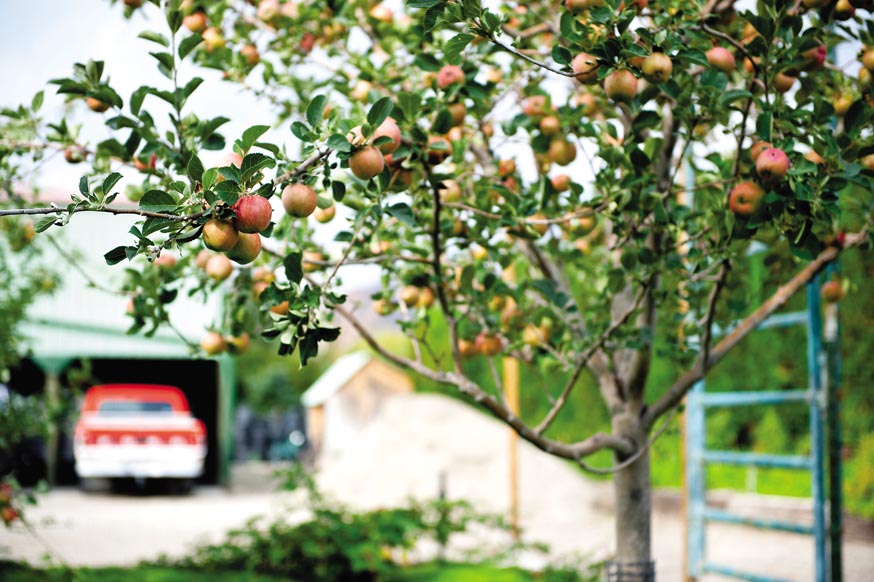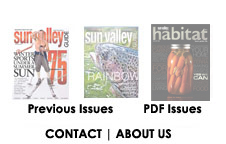The Not So
Forbidden
Fruit
Gardeners all too used to horticultural heartbreak can stem the flow of frost-ruined fruit with a hardy apple tree
text by Jennifer Tuohy photos by Paulette Phlipot
In this short-season high-altitude climate, growing delicate fruits and vegetables such as the much-attempted tomato is a proven recipe for heartbreak. But help is at hand—there is a fruit that is as versatile and tasty as that plump, fickle redhead, yet is perfectly suited to Wood River Valley weather: the apple.
Fruit trees require far less work than vegetable gardens. And while they take longer to bear their edibles, once a fruit tree starts to produce, expect bountiful yields that can be eaten, dried, pureed, canned, drunk and baked.
While apples are among the most cold-hardy of tree fruits, and therefore well adapted to many Idaho locations, they are not the only ones offering valley gardeners respite. According to the University of Idaho's Short Season, High Altitude Gardening bulletin, cherries and plums can also grow anywhere in the state.
Wood River Valley gardeners are already embracing the apple's tarty goodness. "Twenty years ago, planting a fruit tree around here was unheard of," said Jon Wilkes, a horticulturist and valley native since 1975. "Today we see edibles in the landscape as commonplace, and certainly will see that trend continue.
"People are beginning to see that a fruit tree can be ornamental when in flower, then a fruit tree when they harvest," he said. "Some trees offer it all, and that's the fruit tree."
Wilkes attributes part of the increased interest to the sluggish economy. Sales of fruit trees at his Bellevue nursery, Branching Out, have seen a substantial spike in the past five years. "Plus there's a greater awareness now of where your food comes from."
Mark Palmer, nursery manager at Webb, concurs. "Fruit trees tend to follow the economy," he said. "And since 2009 we've seen a definite increase in sales."
For gardeners in the most heartbreaking zone of the valley, Ketchum and north, the apple tree is the closest they'll get to a sure thing. But in the south valley, Wilkes has seen successful plantings of plums, pears, quince, apricots and cherries alongside apples.
Say goodbye to that fair-weather tomato and embrace the hardiness of the fruit tree. Then sit back, relax and prepare to enjoy the fruits of your limited labor.
|
Wilkes' tips for tasty apples
• Select your apple variety: Halla Red, Honeycrisp, Hazen, North Pole, Zestar, Wealthy, Sweet Sixteen and Lodi all do well here.
• Choose a location for the tree that will give it the most shelter with maximum sunlight.
• Plant in spring so the roots can grow before winter.
• Fertilize on planting and then once every few years.
• Protect the bark from browsing animals and rodents.
• Stake young trees for the first two years.
• Apply a dormant oil in spring before the buds break.
|



